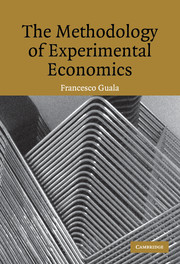Book contents
- Frontmatter
- Contents
- Analytical Table of Contents
- Acknowledgments
- 1 Introduction
- PART ONE INFERENCES WITHIN THE EXPERIMENT
- 2 Inside the Laboratory
- 3 Hypothesis Testing
- 4 Causation and Experimental Control
- 5 Prediction
- 6 Elimination
- PART TWO INFERENCES FROM THE EXPERIMENT
- Appendix A
- Appendix B
- Bibliography
- Index
4 - Causation and Experimental Control
Published online by Cambridge University Press: 10 December 2009
- Frontmatter
- Contents
- Analytical Table of Contents
- Acknowledgments
- 1 Introduction
- PART ONE INFERENCES WITHIN THE EXPERIMENT
- 2 Inside the Laboratory
- 3 Hypothesis Testing
- 4 Causation and Experimental Control
- 5 Prediction
- 6 Elimination
- PART TWO INFERENCES FROM THE EXPERIMENT
- Appendix A
- Appendix B
- Bibliography
- Index
Summary
In this chapter, I introduce a second important model of scientific method: the perfectly controlled experimental design. By doing so, I get at a deeper level in the analysis of experimental methodology than that which is allowed by the HD model of testing. The gain in detail will be paid for by a loss in generality, however: not all experiments are based on the perfectly controlled design. But the move is worth making for at least two reasons. First, a great number of experiments (perhaps the majority) are indirectly related to the perfectly controlled design. As we shall see, this model identifies in an abstract fashion the best possible conditions for the testing of causal hypotheses, and many experiments are indeed devoted to investigating causal relations. Second, the perfectly controlled design will turn out to be extremely useful later on (especially in Chapters 5 and 6), when I tackle issues of inductive inference and return to the Duhem-Quine problem. By looking at the sort of evidence that is provided by the perfectly controlled design, it is fairly easy to articulate more generally the requirements that a piece of evidence should satisfy in order to count as truly confirmatory for a given hypothesis. On top of that, the perfectly controlled experiment will help me introduce some basic features of causal reasoning that will turn out to be useful later in the book.
- Type
- Chapter
- Information
- The Methodology of Experimental Economics , pp. 62 - 83Publisher: Cambridge University PressPrint publication year: 2005

